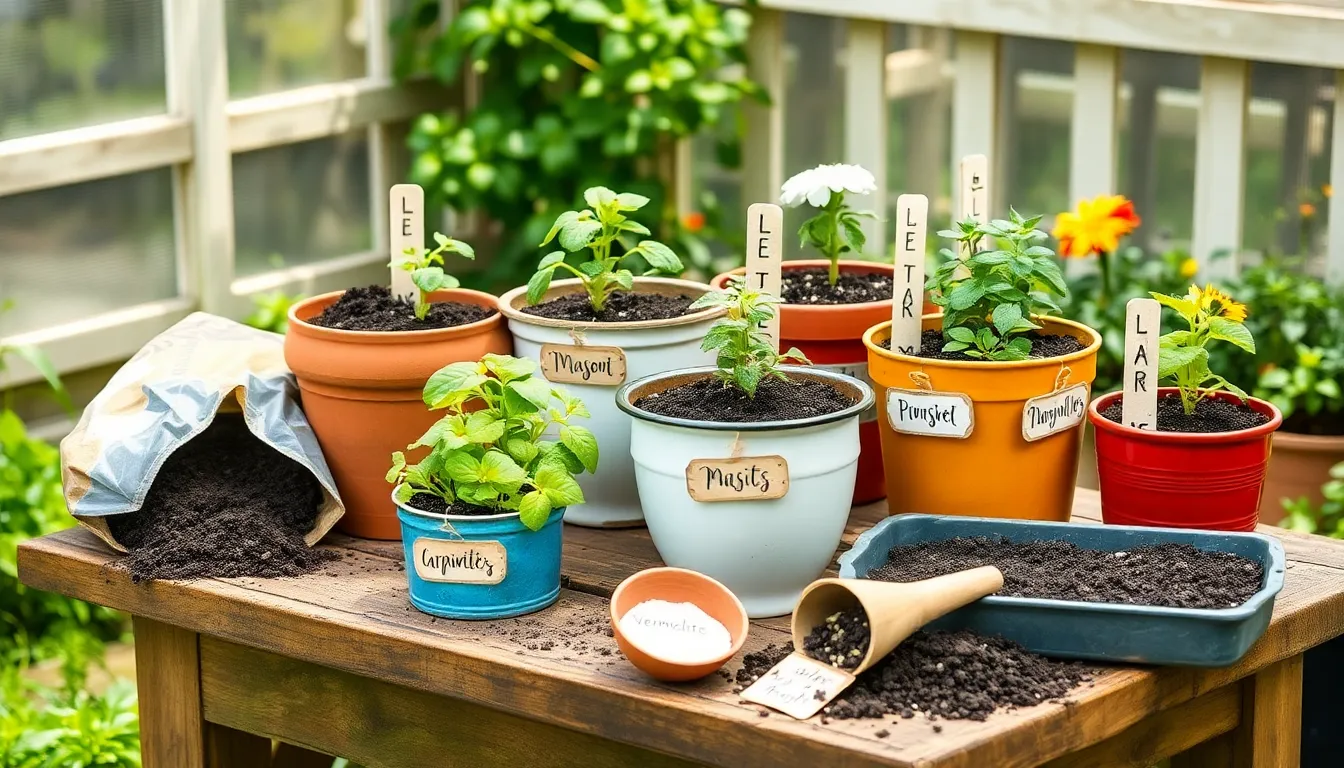There’s something truly magical about watching life unfurl from a tiny seed, especially when it happens right on your windowsill. Whether you’re a green-thumbed veteran or a curious beginner, planting seeds in containers can offer a rewarding gardening experience that fits seamlessly into any lifestyle. This method not only allows you to cultivate a wide variety of plants in limited space but also gives you full control over growing conditions, ensuring your seeds have the best start possible. Container gardening is a versatile approach, perfect for urban dwellers with limited outdoor space as well as seasoned gardeners looking to start their seedlings early.
In this article, you’ll discover all the essential steps to successfully plant and nurture your seeds in containers. We’ll guide you through selecting the right containers, choosing the perfect soil mix, and providing the optimal conditions for germination and growth. You’ll learn how to care for your seedlings as they mature and troubleshoot common issues that might arise. From understanding the nuances of watering to ensuring adequate light, this guide will equip you with practical tips and insights, enabling you to create a thriving mini-garden no matter where you live.
Embarking on the journey of container seed planting can open up a world of possibilities, from cultivating fresh herbs for your kitchen to starting vibrant flowers that brighten your home. As you gain confidence and see the fruits of your labor, you’ll likely find that this gardening practice is as soothing as it is productive. Whether you’re looking to cultivate a few choice plants or expand into a full-fledged indoor garden, this guide will provide the foundational knowledge you need to succeed. So, gather your seeds, prepare your containers, and get ready to embrace the joys of growing your own plants right from the comfort of your home.
Select Suitable Container Size
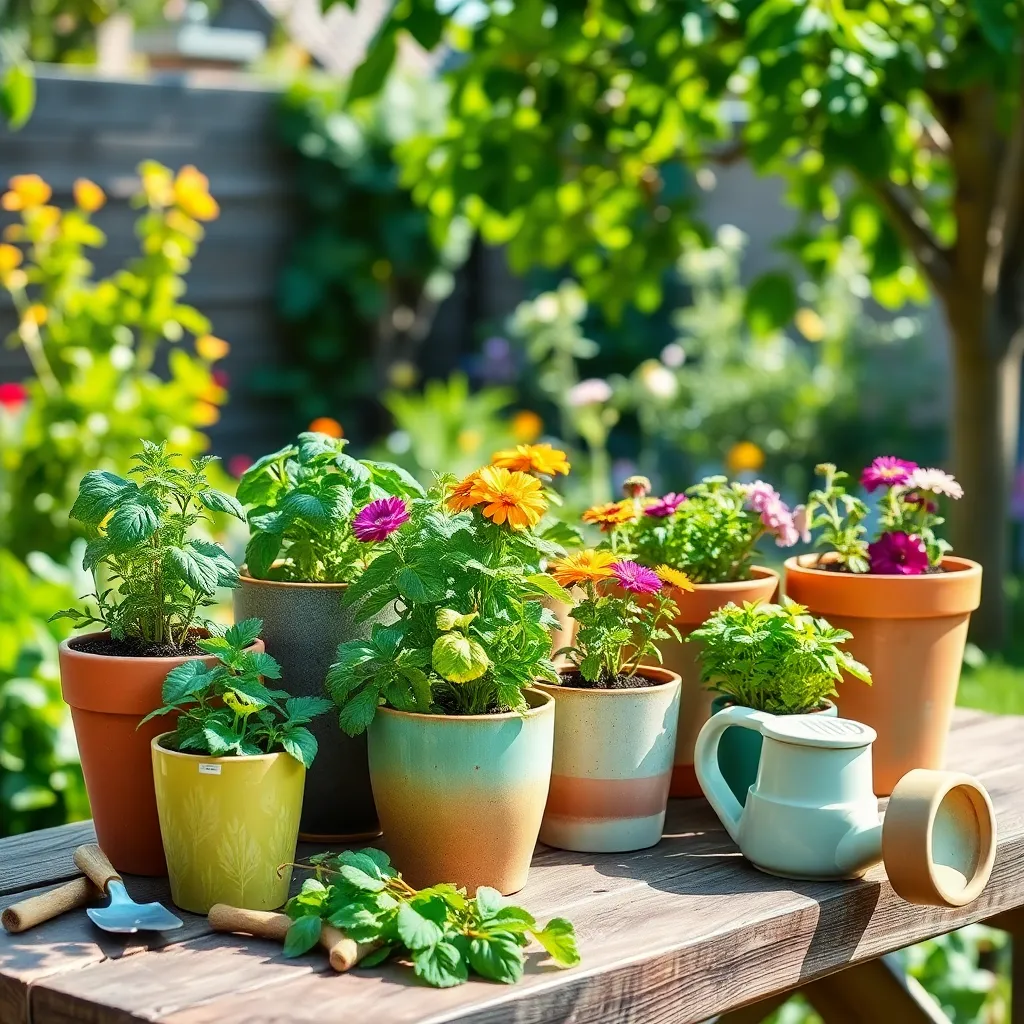
Choosing the right container size is crucial for healthy plant growth and development. A container that is too small can restrict root growth, while an overly large container might retain too much moisture, leading to root rot.
For most herbs and small vegetables, a container with a depth of at least 6-12 inches is ideal. This allows enough space for the roots to grow and supports the plant’s overall health and productivity.
Consider the mature size of the plant when selecting your container. Larger plants like tomatoes or cucumbers will require containers that are at least 18 inches in diameter and depth to ensure sufficient room for root expansion.
Ensure your chosen container has adequate drainage holes to prevent waterlogging, which can damage roots. Using a high-quality potting mix specifically designed for container gardening can enhance drainage and provide essential nutrients.
Advanced gardeners might experiment with self-watering containers, which help maintain consistent moisture levels. These are especially beneficial in hot climates or for gardeners who may not be able to water daily.
Fill with Quality Potting Mix
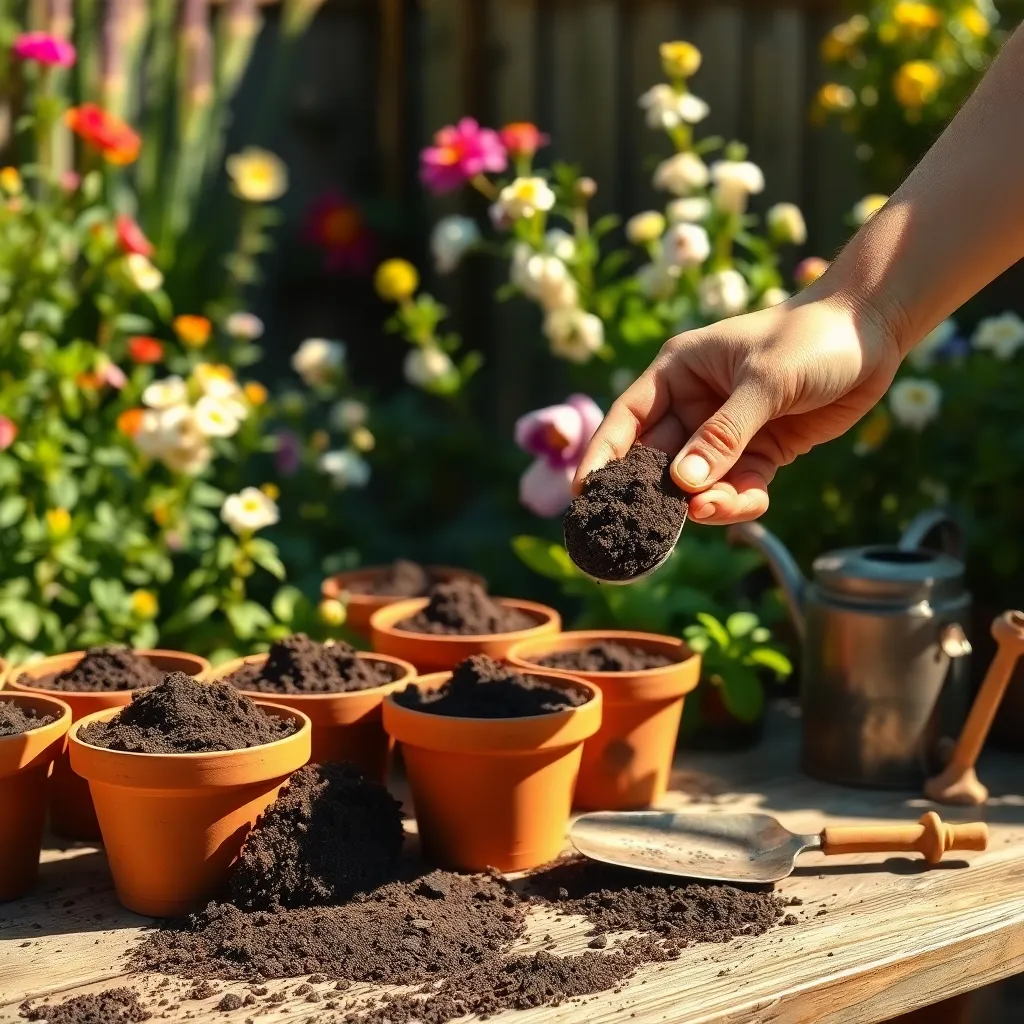
After choosing the right container, it’s crucial to fill it with a quality potting mix that supports seed germination and growth. A well-balanced potting mix provides the necessary nutrients, aeration, and drainage for healthy plant development.
Start by selecting a potting mix that is specifically designed for container gardening. These mixes are often lighter and more porous, which helps in maintaining adequate moisture and preventing root rot.
Avoid using garden soil in your containers, as it can compact easily and may harbor pests or diseases. Instead, look for mixes that contain ingredients like peat moss, vermiculite, or perlite, which enhance the soil structure.
For an extra boost, you might consider adding a slow-release fertilizer to your potting mix. This will provide a steady supply of nutrients as your seeds begin to sprout and grow, ensuring robust seedlings.
Remember to moisten the potting mix before adding it to your container, as this helps achieve consistent moisture levels and prevents dry spots. Aim for a texture that feels like a wrung-out sponge, which is ideal for most seeds to germinate successfully.
Sow Seeds at Recommended Depth
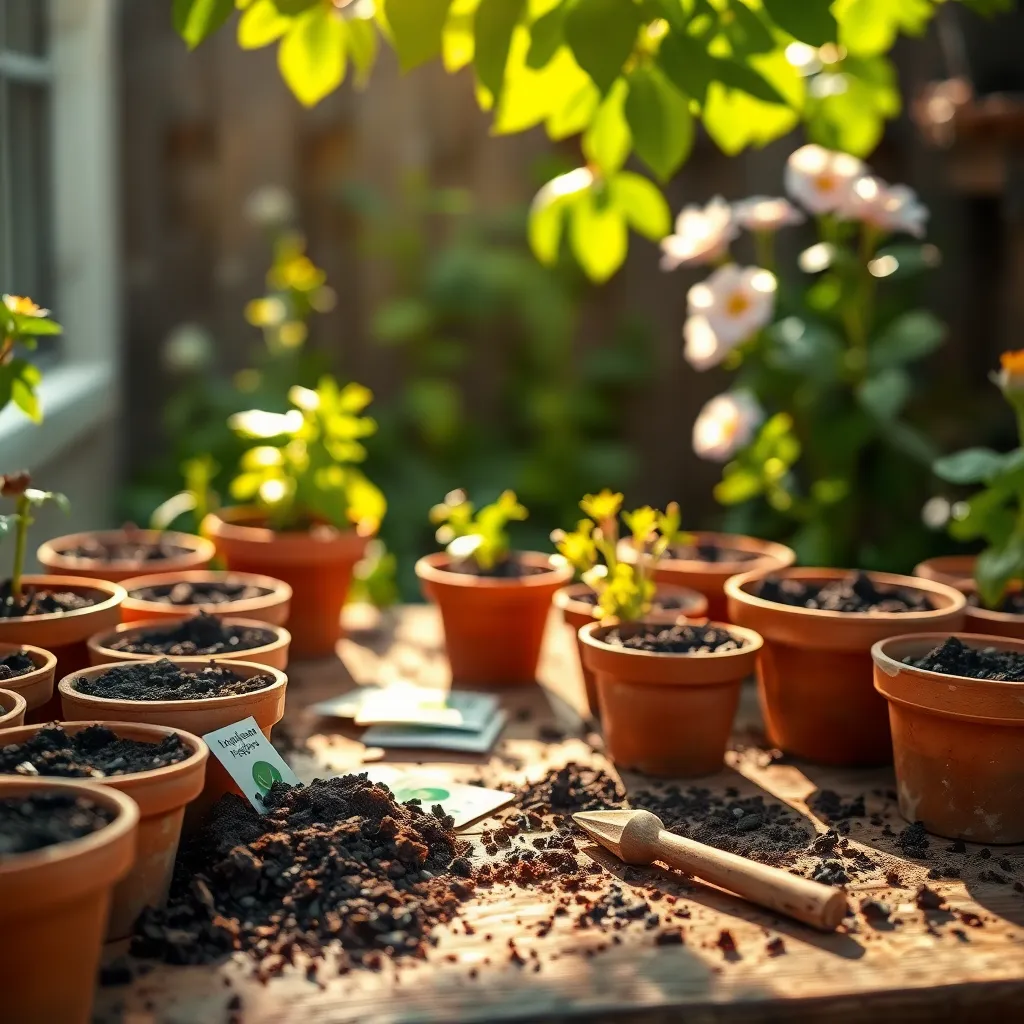
Understanding the recommended depth for sowing seeds is crucial for successful germination. Seeds planted too deeply may struggle to push through the soil, while those sown too shallowly can dry out or be washed away.
To find the right depth, check the seed packet, which often provides specific guidelines. As a general rule, a seed should be planted at a depth about two to three times its diameter.
For small seeds like lettuce or basil, sprinkle them lightly on the soil surface and barely cover them with a light layer of potting mix. Larger seeds, such as beans or peas, should be planted deeper—usually about an inch or so beneath the soil.
When planting, gently press the soil over the seeds to ensure good contact, which aids in moisture absorption. Water the soil lightly after planting to keep it consistently moist but not waterlogged, ensuring optimal conditions for seedling emergence.
Using a quality potting mix that retains moisture while providing adequate drainage can enhance germination success. For experienced gardeners, consider using a humidity dome over the container to maintain consistent moisture and temperature levels, promoting healthier growth.
Water Gently and Evenly
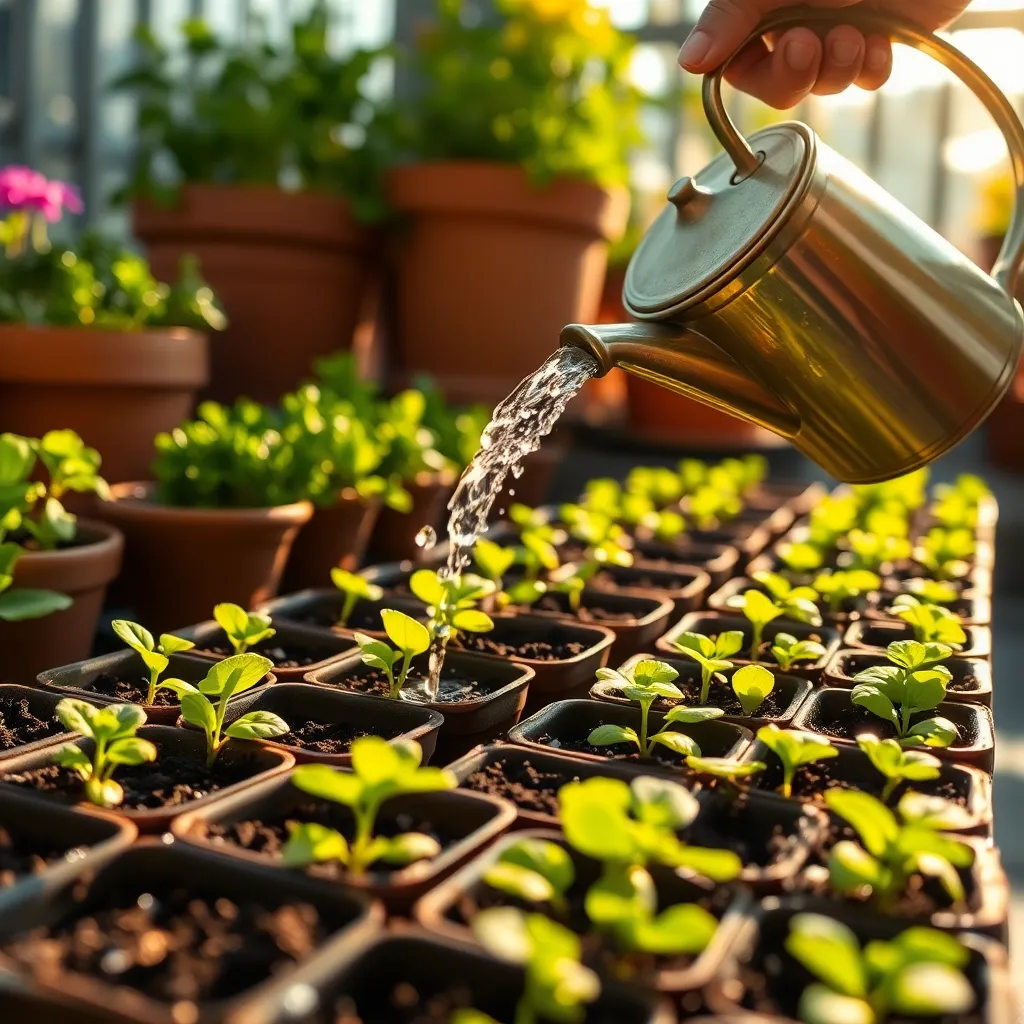
Once you’ve sown your seeds at the correct depth, it’s crucial to water them properly to ensure successful germination. Watering gently and evenly is key to avoid disturbing the seeds and soil while providing consistent moisture.
To achieve this, use a watering can with a fine rose attachment or a spray bottle to apply water lightly. This helps distribute the water without creating pools or washing away the seeds, which can happen with a strong stream of water.
Another effective method is to water from the bottom by placing your containers in a shallow tray of water. This allows the soil to absorb moisture through the drainage holes, encouraging the roots to grow downward and ensuring even moisture distribution.
For best results, maintain a regular watering schedule, keeping the soil consistently moist but not waterlogged. Check the soil daily, especially during warm or windy conditions, as containers can dry out quickly, impacting seedling health.
Advanced gardeners might consider using a soil moisture meter to monitor moisture levels more precisely. This tool can help fine-tune your watering routine, ensuring that your seeds receive the right amount of hydration at all times.
Position for Optimal Sunlight
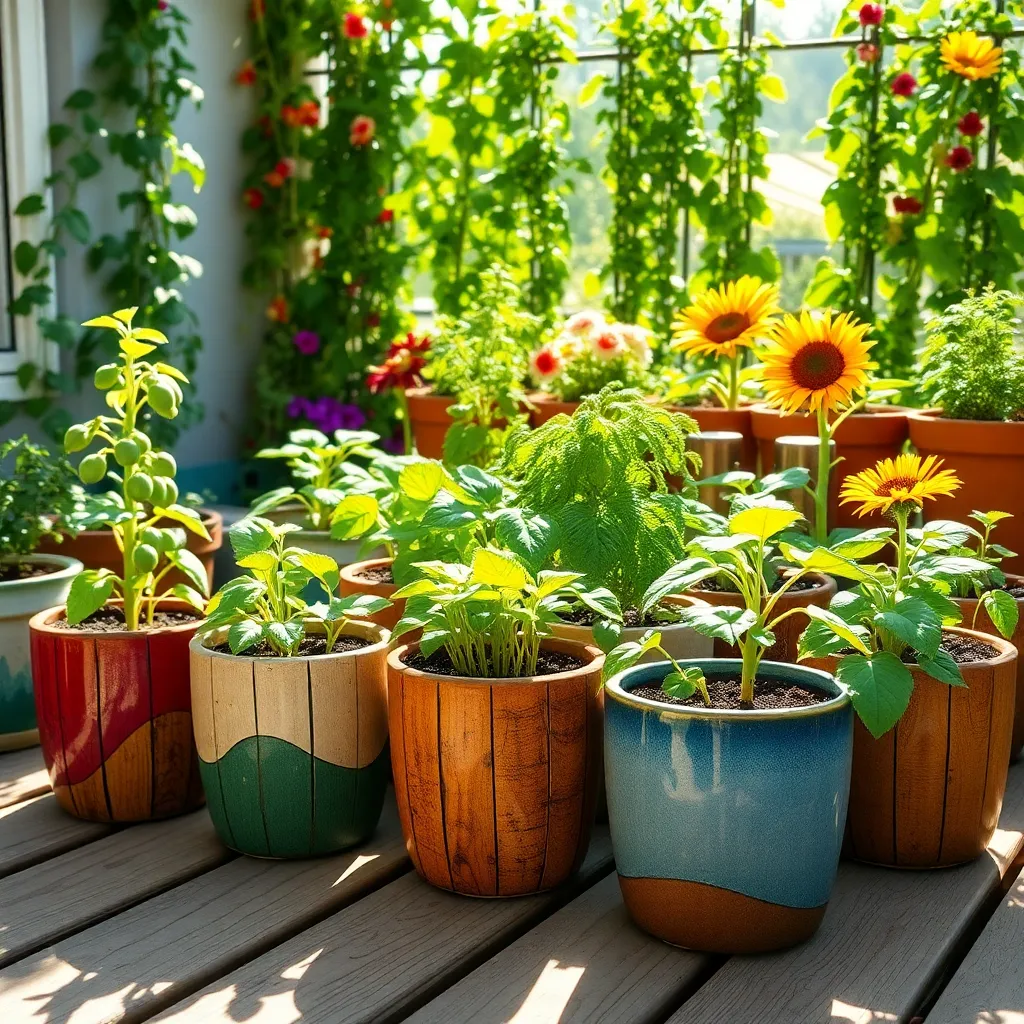
To ensure your seedlings thrive, place your containers in a spot where they can receive at least six to eight hours of sunlight each day. If you have a south-facing window, it can serve as an excellent location for maximizing sunlight exposure.
For those without ample sunlight indoors, consider placing your containers under grow lights to supplement natural light. These lights should be positioned about 2-4 inches above the seedlings and can be adjusted as the plants grow.
It’s essential to rotate your containers every few days to prevent your seedlings from leaning towards the light source. This practice encourages even growth and helps the plants develop strong, balanced stems.
Advanced gardeners might experiment with reflective surfaces behind their containers to maximize light exposure. Aluminum foil or white boards can be effective in bouncing light back to the plants, ensuring that they receive an even distribution of light.
Conclusion: Growing Success with These Plants
As we journey through the nurturing process of relationship-building, the metaphor of planting seeds in containers offers profound insights. We explored five key concepts: the importance of choosing the right “soil” by fostering a supportive environment, the need for consistent “watering” with communication and quality time, the practice of “pruning” by setting healthy boundaries, the power of “sunshine” through positive reinforcement, and the patience required to watch love “grow.” Each aspect is a vital ingredient in cultivating strong, resilient connections.
Now, it’s time to take action. Implement one of these strategies today: initiate an open and honest conversation with a loved one or express appreciation for something small. This simple gesture can be the first step in nurturing your relationship garden.
To ensure these insights are always at your fingertips, save or bookmark this article for future reference. Relationships thrive on continuous effort and reflection, and having this guide in your toolkit will empower you to maintain and grow your connections over time.
Remember, with dedication and mindful cultivation, your relationships can flourish and bring lasting joy. Here’s to cultivating a garden of love that stands the test of time!

